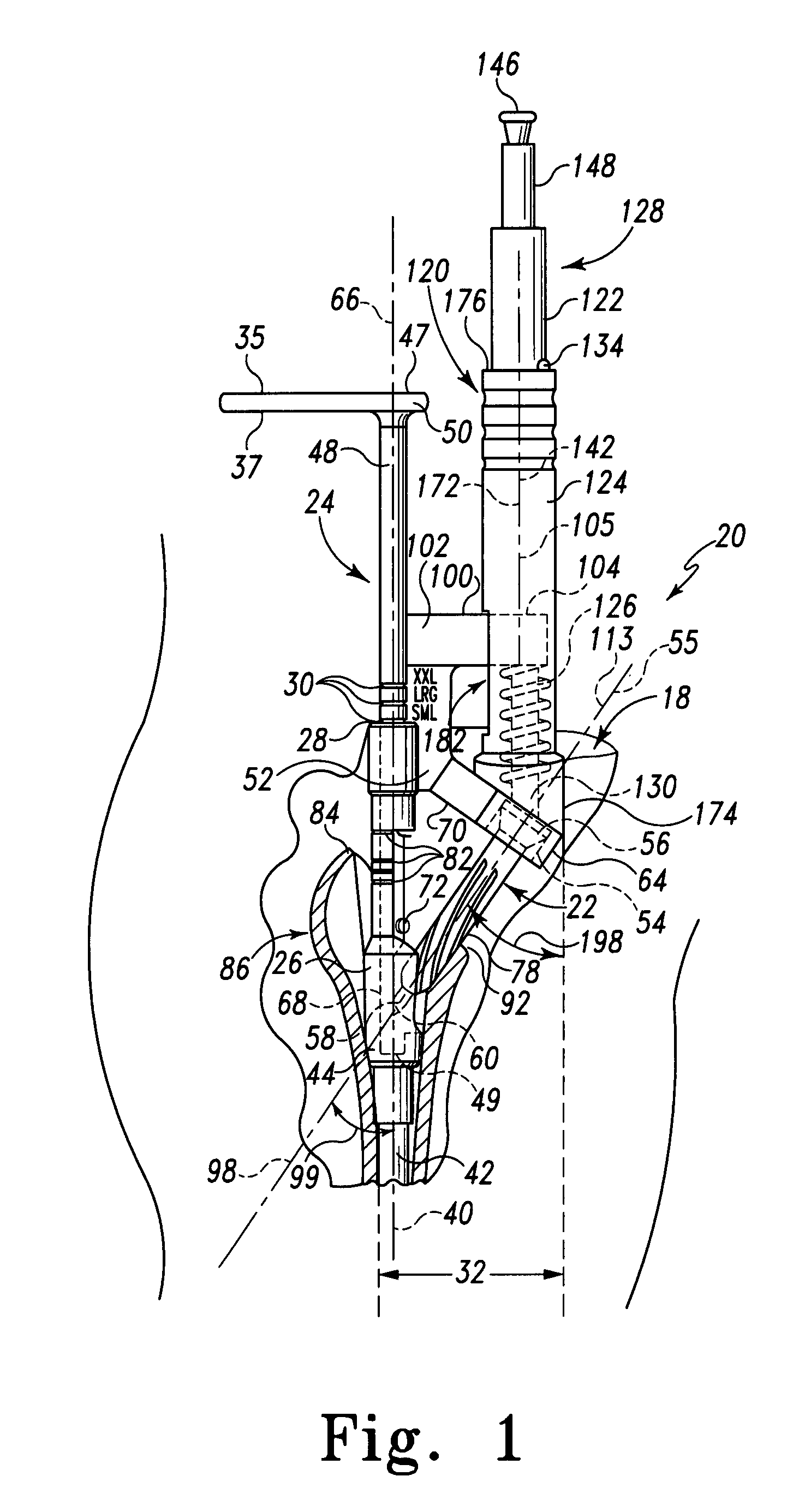Minimally invasive bone miller apparatus
a bone miller and minimally invasive technology, applied in the field of artificial joint prostheses, can solve the problems of reducing the size of the incision, and reducing the risk of fracture during broaching
- Summary
- Abstract
- Description
- Claims
- Application Information
AI Technical Summary
Benefits of technology
Problems solved by technology
Method used
Image
Examples
Embodiment Construction
[0033]For the purposes of promoting an understanding of the principles of the invention, reference will now be made to the embodiments illustrated in the drawings and described in the following written specification. It is understood that no limitation to the scope of the invention is thereby intended. It is further understood that the present invention includes any alterations and modifications to the illustrated embodiments and includes further applications of the principles of the invention as would normally occur to one skilled in the art to which this invention pertains.
[0034]The disclosed triangle miller assembly 20 allows a surgeon to machine (mill) bone through a smaller incision 18 compared to existing surgical instruments. The disclosed miller assembly 20 is derived from a standard miller assembly such as that disclosed in DeCarlo, Jr. et al., Instrument for Cutting Bone, U.S. Pat. No. 5,540,694, issued Jul. 30, 1996, the disclosure of which is hereby incorporated herein b...
PUM
 Login to View More
Login to View More Abstract
Description
Claims
Application Information
 Login to View More
Login to View More - R&D
- Intellectual Property
- Life Sciences
- Materials
- Tech Scout
- Unparalleled Data Quality
- Higher Quality Content
- 60% Fewer Hallucinations
Browse by: Latest US Patents, China's latest patents, Technical Efficacy Thesaurus, Application Domain, Technology Topic, Popular Technical Reports.
© 2025 PatSnap. All rights reserved.Legal|Privacy policy|Modern Slavery Act Transparency Statement|Sitemap|About US| Contact US: help@patsnap.com



